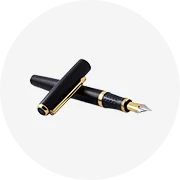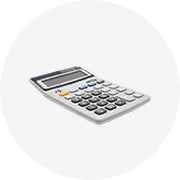Types of Physics Dynamic Carts
A dynamic physics cart is an essential educational tool used to demonstrate and explore fundamental physical concepts such as motion, force, acceleration, friction, and momentum. These carts are widely used in classrooms and laboratories to provide hands-on learning experiences that help students visualize abstract physics principles.
Dynamic carts come in various types, each designed for specific experimental purposes. From basic motion demonstrations to advanced data collection, these carts enable educators and students to conduct a wide range of physics experiments with precision and clarity.
Fan Cart
A fan cart is equipped with a built-in electric fan that generates a steady airflow when activated. This airflow applies a continuous force on the cart, propelling it forward or backward depending on the fan's orientation.
Advantages
- Demonstrates constant velocity and net force direction
- Ideal for studying resistance forces and acceleration
- Enables tracking of speed variations and directional changes
- Simple setup for classroom use
Limitations
- Limited control over variable forces
- Battery-powered models may have inconsistent performance
- Not suitable for high-precision momentum studies
Best for: Demonstrating Newton’s first and second laws, force balance, and qualitative motion analysis
Track Cart
Track carts are specifically designed to move along straight or curved tracks with minimal deviation, ensuring controlled motion and consistent experimental conditions.
Advantages
- Offers precise motion control and measurement
- Excellent for demonstrating Newton's laws of motion
- Facilitates collision and momentum conservation experiments
- Compatible with various track configurations (straight, curved, inclined)
Limitations
- Requires dedicated track system
- Friction cannot be completely eliminated without modifications
- May require additional accessories for advanced measurements
Best for: Studying linear motion, collisions, and momentum transfer under controlled conditions
Frictionless Cart
Frictionless carts are engineered to minimize or eliminate friction between the cart and the surface, allowing for idealized motion studies without external interference.
Advantages
- Perfect for demonstrating uniformly accelerated motion
- Allows clean testing of Newton’s second law (F=ma)
- Minimizes energy loss due to friction
- Enables accurate measurement of applied forces
Limitations
- True "frictionless" operation requires air tracks or magnetic levitation
- More complex setup compared to standard carts
- Higher cost than traditional dynamic carts
Best for: Idealized motion experiments, force-mass relationship studies, and kinetic energy investigations
Variable Mass Cart
Variable mass carts allow users to add or remove weights during experiments, enabling the study of how mass affects motion, acceleration, and force interactions.
Advantages
- Demonstrates Newton’s second law across different masses
- Useful for rocket propulsion analogies and momentum conservation
- Provides hands-on experience with inertia and acceleration
- Easily adjustable for varied experiment setups
Limitations
- Mass distribution can affect results if not balanced properly
- Additional weights may introduce minor frictional inconsistencies
- Less suitable for ultra-high-precision experiments
Best for: Force-mass relationship experiments, inertia studies, and collision dynamics involving varying masses
Digital Cart
Digital carts integrate modern technology with traditional physics experimentation by incorporating sensors, data loggers, and wireless communication modules.
Advantages
- Real-time data collection and visualization
- High accuracy in measuring motion, velocity, and force
- Connects directly to computers or tablets for analysis
- Supports integration with software platforms for interactive learning
Limitations
- Higher initial investment compared to traditional carts
- Requires technical knowledge to operate effectively
- Potential compatibility issues with older systems
Best for: Advanced physics labs, real-time data analysis, and integrating technology into science education
| Type | Key Features | Best For | Accuracy Level | Complexity |
|---|---|---|---|---|
| Fan Cart | Integrated fan for force generation | Motion, force direction, resistance | Moderate | Low |
| Track Cart | Designed for controlled track movement | Collisions, Newton’s laws | Good | Moderate |
| Frictionless Cart | Minimal friction design | Idealized motion studies | High | High |
| Variable Mass Cart | Adjustable mass capability | Force-mass relationships, inertia | Good | Moderate |
| Digital Cart | Sensors, data logging, wireless connectivity | Real-time data analysis, advanced experiments | Very High | High |
Expert Tip: When conducting experiments with digital carts, ensure all sensors are calibrated before starting. Use compatible software to visualize data trends in real time for better understanding of physical phenomena.
Specifications and Maintenance of Physics Dynamic Carts
Physics dynamic carts are essential tools in educational and experimental settings for studying motion, forces, and energy dynamics. Ensuring these carts remain in optimal working condition is crucial for accurate data collection and consistent experimental results. Proper maintenance involves a combination of physical upkeep, software management, and environmental considerations.
Key Specifications to Consider
Before purchasing or using a physics dynamic cart, it's important to understand the technical specifications that will impact performance and compatibility with your experimental setup:
Material Composition
Dynamic carts are typically constructed from lightweight yet durable materials such as aluminum alloys or reinforced plastics. These materials ensure minimal inertia while maintaining structural integrity during repeated use.
Aluminum frames offer excellent rigidity and corrosion resistance, while plastic components provide insulation and reduce overall weight, which is especially beneficial in sensitive motion experiments.
Wheel and Axle Design
The wheels and axles play a critical role in the cart’s movement accuracy. High-quality carts feature precision bearings and low-friction surfaces to ensure smooth, predictable motion across tracks or flat surfaces.
Some advanced models include adjustable wheel alignment systems to compensate for track irregularities and maintain consistent contact with the surface.
Power Source and Battery Life
Most modern dynamic carts come equipped with rechargeable batteries that power onboard sensors, wireless modules, and motorized functions (if applicable).
Battery life varies depending on usage intensity and sensor activity. It's essential to select a cart with sufficient battery capacity for extended lab sessions and to follow proper charging protocols to prolong battery lifespan.
Sensor Compatibility
Dynamic carts often integrate with various sensors such as accelerometers, gyroscopes, force sensors, and motion detectors. Compatibility with external devices like data loggers or computer interfaces is vital for collecting precise measurements.
Ensure the cart supports common communication protocols (e.g., Bluetooth, USB) and works seamlessly with your existing laboratory software ecosystem.
| Specification | Importance | Selection Tips |
|---|---|---|
| Mass and Inertia | High | Select a cart with known and standardized mass values for controlled experiments; additional weights should be compatible and easy to attach/detach |
| Track Compatibility | High | Ensure the cart fits standard lab tracks and has adjustable feet or magnets if needed for stability |
| Wireless Connectivity | Medium | Choose carts with reliable wireless transmission to avoid interference and data loss during real-time monitoring |
| Durability and Shock Resistance | Medium | Look for carts with rugged build quality to withstand frequent handling and potential drops |
Essential Maintenance Practices
To keep your physics dynamic cart performing reliably and to extend its service life, implement a structured maintenance routine that addresses both hardware and software aspects:
Important: Always store the dynamic cart in a clean, dry environment when not in use. Exposure to moisture, extreme temperatures, or direct sunlight can degrade materials and electronic components over time. If multiple carts are used together, maintain uniform calibration across all units to ensure consistency in comparative experiments.
How to Choose a Physics Dynamic Cart
Selecting the right physics dynamic cart is crucial for educators, researchers, and retailers who aim to provide functional, durable, and versatile equipment to their customers. The ideal cart should align with the specific experimental needs, user preferences, and environmental conditions.
Cart Type and Experimental Use
The type of physics cart you choose should be based on the primary use case. For example, a basic dynamics cart is suitable for fundamental motion and force experiments, while a photonics-enabled cart supports advanced optics and light-related studies.
- Basic Dynamics Carts: Ideal for Newtonian mechanics and collision experiments.
- Photonics Carts: Designed for optical alignment and laser-based investigations.
- Smart Carts: Equipped with sensors for real-time data collection in digital labs.
Pro Tip: Always match the cart's features to curriculum requirements or research objectives.
Material Composition and Durability
Physics carts are constructed from various materials such as metal, wood, plastic, or composite blends. Each material offers unique benefits in terms of durability, weight, and cost-effectiveness.
- Metal Carts: Durable and long-lasting but heavier, making them less portable.
- Plastic Carts: Lightweight and resistant to corrosion but may wear faster under heavy use.
- Wooden Carts: Aesthetically pleasing and traditional choice, though susceptible to moisture and warping.
- Composite Carts: Combine strength and lightweight properties, often used in high-end lab settings.
Important: Consider usage frequency and environment when selecting materials.
Shelf Configuration and Storage Needs
Carts come with varying numbers of shelves—typically two, three, or four. The number of shelves affects both storage capacity and portability.
- Two-Shelf Models: Compact and easy to maneuver, suitable for small labs or frequent relocation.
- Three-Shelf Models: Offer balanced storage without sacrificing mobility.
- Four-Shelf Models: Maximize storage space but may be bulkier and harder to store in tight spaces.
Design Note: Look for modular shelf systems that allow reconfiguration as needs change.
Wheel Type and Mobility Performance
Wheels play a significant role in the cart’s usability across different floor types and environments. Rubber, plastic, and metal wheels each have distinct advantages.
- Rubber Wheels: Provide quiet operation and excellent grip, especially on uneven or tiled floors.
- Plastic Wheels: Lightweight and economical but can be noisy and less stable on rough surfaces.
- Metal Wheels: Extremely durable but noisy and best suited for smooth industrial floors.
Mobility Tip: Swivel casters improve maneuverability around tight corners and lab benches.
Weight Capacity and Structural Integrity
Understanding the maximum load a cart can handle is essential, particularly if it will transport heavy scientific instruments or multiple sets of lab equipment.
- Light-Duty Carts: Support up to 100 lbs; ideal for classroom demonstrations.
- Medium-Duty Carts: Handle loads between 100–200 lbs; suitable for general lab use.
- Heavy-Duty Carts: Rated for over 200 lbs; recommended for industrial or research labs.
Safety Reminder: Always check manufacturer specifications for safe loading limits.
Adjustability and User Flexibility
Adjustable components such as handles and shelves enhance usability for users of different heights and physical abilities, and also improve storage efficiency.
- Telescoping Handles: Allow height customization for comfortable pushing or pulling.
- Adjustable Shelves: Enable flexible organization of irregularly shaped items.
- Foldable Designs: Offer compact storage when not in use, ideal for limited-space environments.
User Benefit: Adjustable carts promote ergonomic practices and reduce physical strain.
Budget Planning Tip: When working within a budget, prioritize core functionalities such as stability, adjustability, and wheel quality over cosmetic features. Investing in a slightly more expensive but higher-quality cart can save costs over time through reduced maintenance and longer lifespan.
| Use Case | Recommended Cart Type | Material | Key Features |
|---|---|---|---|
| High School Physics Lab | Basic Dynamics Cart | Plastic or Composite | Two shelves, rubber wheels, medium weight capacity |
| University Research Lab | Smart or Photonics Cart | Metal or High-Grade Composite | Adjustable shelves, swivel wheels, high weight capacity |
| Vocational Training Center | Heavy-Duty Cart | Metal or Reinforced Plastic | Four shelves, metal wheels, foldable design |
| Home Education or Small Classroom | Compact Adjustable Cart | Wood or Lightweight Composite | Telescoping handle, two shelves, lightweight |
DIY Replacement Guide for Physics Dynamic Carts
Replacing a physics dynamic cart is a practical task that can be completed with careful planning and attention to detail. Whether you're maintaining lab equipment or upgrading to a newer model, this guide will walk you through each step of the replacement process to ensure accuracy, safety, and optimal performance for educational experiments.
Safety Warning: Always work in a clean, well-lit environment when handling precision laboratory equipment. Wear protective gloves when cleaning or handling small components to avoid contamination or damage.
Step-by-Step Replacement Process
- Gather Necessary Tools and Documentation
- Collect basic tools such as screwdrivers (flathead and Phillips), pliers, Allen wrenches, and wire cutters if needed.
- Ensure you have the assembly manual for both the old and new carts to compare specifications and installation procedures.
- Prepare a soft cloth, mild cleaning solution, and compressed air for cleaning sensitive parts like sensors or circuitry.
- Have a magnetic tray or small container ready to organize screws and small components during disassembly.
- Disassemble the Old Cart Systematically
- Begin by removing any end caps, wheels, and axles using the appropriate tools as outlined in the manual.
- Carefully disconnect sensors, motors, or data cables, labeling them if necessary for easy reinstallation.
- Take photos at each stage of disassembly to serve as visual references during reassembly.
- Keep all fasteners and hardware organized to prevent loss or confusion later on.
- Clean the New Cart Thoroughly
- Wipe down all surfaces of the new cart with a damp cloth and mild detergent to remove any manufacturing residue or dust.
- Use compressed air to clear debris from tight spaces, especially around sensor mounting points and wheel wells.
- Inspect all threaded holes and connectors for obstructions before proceeding to assembly.
- Assemble the New Cart with Precision
- Follow the manufacturer’s instructions step-by-step to assemble the frame, axles, and wheel mechanisms.
- Secure all joints and brackets with the correct torque settings to avoid over-tightening or stripping threads.
- Install replacement parts such as bearings or wheels if your existing ones are worn or damaged.
- Double-check alignment of moving parts to ensure smooth motion and accurate data collection during experiments.
- Transfer Sensors and Instruments Carefully
- Remove any functioning sensors, photogates, or motorized components from the old cart with care.
- Clean these components thoroughly before installing them onto the new cart to maintain calibration integrity.
- Ensure all electrical connections are secure and insulated properly to avoid short circuits or signal interference.
- Calibrate the New Cart for Accuracy
- Connect the cart to the lab interface or data acquisition system.
- Run calibration tests to verify that all sensors are responding correctly and within expected parameters.
- Adjust sensitivity levels or zero-point offsets if necessary to align with previous experimental baselines.
- Test the Cart Under Controlled Conditions
- Perform low-speed movement tests to check for mechanical resistance or uneven motion.
- Conduct sample acceleration and deceleration trials to validate sensor readings and data consistency.
- Monitor battery life (if applicable) and ensure the cart maintains power throughout testing sessions.
- Store Old Parts Safely for Future Reference
- Pack all removed components into labeled containers or bags.
- Store them in a dry, dust-free cabinet or drawer for potential troubleshooting or spare parts usage.
- Document any notable wear or failure points observed in the old cart to inform future maintenance cycles.
Pro Tip: Before fully committing to the replacement, take time to compare the performance metrics between the old and new carts. This ensures consistency in lab results and helps identify any adjustments needed early in the process.
| Replacement Phase | Key Actions | Common Pitfalls | Recommended Tools |
|---|---|---|---|
| Preparation | Review manuals, gather tools, organize workspace | Misplacing small parts, missing required tools | Screwdriver set, magnetic tray, camera |
| Disassembly | Label connections, photograph steps | Damaged wiring, lost screws | Pliers, wire cutters, zip ties |
| Assembly | Follow manual, torque specs, alignment checks | Cross-threaded bolts, misaligned sensors | Allen wrenches, torque screwdriver |
| Calibration | Run diagnostics, adjust settings | Inaccurate readings, unresponsive sensors | Data interface, software tools |
| Testing | Verify motion, sensor response, battery life | Unexpected errors during experiment | Track setup, timing gates, multimeter |
Frequently Asked Questions About Physics Dynamic Carts
A physics dynamic cart serves as an essential tool for investigating foundational principles of classical mechanics, particularly motion, force, and energy interactions. These carts are designed to move along low-friction tracks or surfaces, enabling students to observe and measure how forces affect motion in controlled environments.
They are commonly used to demonstrate:
- Uniform and accelerated motion: By measuring displacement over time, students can explore velocity and acceleration dynamics.
- Momentum conservation: In collision experiments (elastic and inelastic), carts help visualize momentum transfer between objects.
- Newton's laws: Each law becomes tangible through applied forces and measured responses using these carts.
- Friction analysis: With adjustable surface materials, students quantify frictional effects on movement and energy loss.
Absolutely — one of the most common educational applications of a dynamic cart involves the experimental investigation of friction. The cart allows students to analyze both static and kinetic friction by varying the surface materials beneath the cart and applying different forces to initiate or maintain motion.
Experiments typically involve:
- Measuring the force required to start the cart moving (static friction)
- Calculating the force needed to keep it moving at constant speed (kinetic friction)
- Comparing results across different surfaces such as wood, metal, sandpaper, or carpet
- Determining the coefficient of friction for each material combination
These hands-on activities reinforce theoretical concepts like the relationship between normal force and friction, and how surface texture affects resistance to motion.
A dynamic cart is an invaluable resource for making Newton’s three laws of motion accessible and engaging for learners. Here’s how each law can be explored using this tool:
- Newton’s First Law (Law of Inertia): Students observe that a cart remains at rest unless acted upon by an external force, and continues moving at constant velocity unless friction or another force intervenes. This demonstrates inertia in action.
- Newton’s Second Law (F = ma): By attaching masses to the cart and applying known forces (e.g., via hanging weights or spring scales), students can measure acceleration and graph the relationships between force, mass, and acceleration. This helps them grasp how net force influences motion quantitatively.
- Newton’s Third Law (Action-Reaction): When two carts collide or push apart with magnets or springs, students witness equal and opposite forces acting on each object, even if their resulting accelerations differ due to mass differences.
These interactive demonstrations transform abstract physical laws into observable, measurable phenomena, reinforcing conceptual understanding and encouraging analytical thinking.
While physics dynamic carts are primarily designed for horizontal linear motion, they can be effectively adapted for vertical motion studies when combined with inclined planes, pulley systems, or elevated tracks. This versatility extends their utility beyond basic motion experiments to include:
- Inclined plane investigations: By tilting the track, students explore components of gravitational force, acceleration down slopes, and energy transformations between potential and kinetic energy.
- Pendulum-like motion: With pulleys and hanging masses, carts can simulate oscillatory motion patterns, useful for studying periodic forces and harmonic motion basics.
- Free-fall approximations: Although true free-fall requires unimpeded vertical drop, modified setups can approximate vertical acceleration under gravity while minimizing lateral movement.
- Projectile motion simulations: Using angled launchers or curved tracks, students can model projectile trajectories and analyze the independence of horizontal and vertical motion components.
These adaptations allow educators to teach broader physics topics without requiring specialized equipment, maximizing the learning potential of a single apparatus.
No — despite its widespread use in high school physics classrooms, the physics dynamic cart is also valuable in middle school introductory science courses and university-level foundational physics labs. Its adaptability makes it suitable across various educational levels:
| Educational Level | Typical Use Case | Learning Outcomes |
|---|---|---|
| Middle School | Basic motion observation, simple force diagrams | Introduction to speed, direction, and cause-effect relationships in motion |
| High School | Newton’s laws, friction, momentum, energy conservation | Quantitative data collection, graphing, formula application |
| College/Introductory University | Advanced kinematics, error analysis, experimental design | Development of scientific methodology and critical evaluation skills |
This flexibility ensures that the dynamic cart remains a relevant and effective teaching aid throughout a student’s physics education journey.


























































